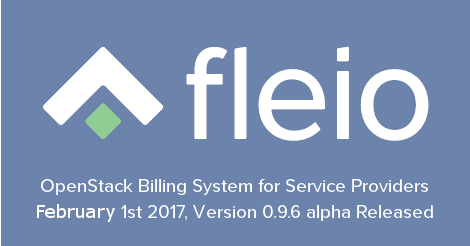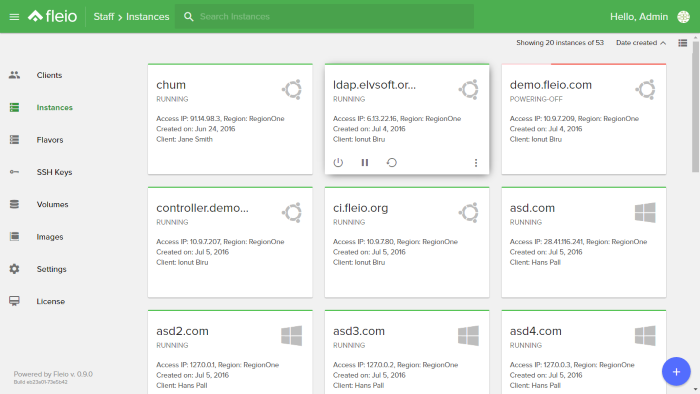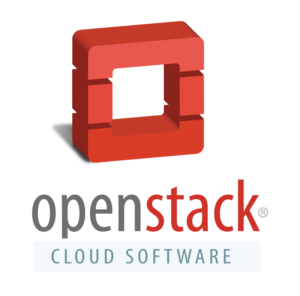
The 0.9.6 version brings:
We’ve just released Fleio 0.9.3. This is another alpha release meant to offer a preview of OpenStack billing features and self-service portal features. It’s not intended for production use.
A first version of internationalization is available. Besides English, we’ve included a Romanian translation and an incomplete German translation.
We’ve added floating IPs to Fleio. Note that they are not enabled by default.
We’ve made significant advancements in multi-region support and it’s almost ready. We’ll probably have full support in the next release.
You can now choose which OpenStack flavors to be available in Fleio when creating or upgrading a virtual machine.
Bug fixing and optimization.
We’ve done some architectural changes, introducing a collector service that runs in each OpenStack region. Fleio collector connects to the OpenStack internal message queue, filters messages and forwards them to another queue for Fleio backend to process.
The Fleio collector lowers the number of messages passed from your regions to Fleio, reducing bandwidth usage and improving performance.
The collector is an optional service and you can run Fleio without it. Especially if you’re running a single region and Fleio is configured to have access directly to the OpenStack messaging broker.
The updated service, which gets OpenStack messages and updates our cache database, was rewritten to be more scalable and maintainable.
Fleio was designed from the first days to be able to serve the frontend files from any server, even from a CDN. And now we’ve split the fleio installation package into fleio-backend and fleio-frontend.
Full release notes are here: https://fleio.com/docs/changelog.html#v0-9-3
Online Fleio demo: https://demo.fleio.com
Sign up for a trial license and evaluate Fleio in your environment: https://fleio.com/signup
We plan to launch the first Fleio stable verison at the end of January 2017.
Fleio is an OpenStack billing system and self-service control panel for public cloud service providers.
Version 0.9-alpha, the first public release, is now available to download and install on-premises.

Fleio – OpenStack Billing and Self-Service Portal – Staff Area
Fleio’s high-level features are:
You saw the billing options you have for block devices and disk images. Today I’d like to show you the OpenStack billing features for compute instances and network traffic.
Fleio can apply a cost to compute instances based on multiple attributes:
 The public cloud hosting market is large and growing, with 50,000 companies worldwide competing for customers. With 80 percent of the market occupied by small and medium providers, it’s clear that businesses today need to stand out and provide innovative service to their clients.
The public cloud hosting market is large and growing, with 50,000 companies worldwide competing for customers. With 80 percent of the market occupied by small and medium providers, it’s clear that businesses today need to stand out and provide innovative service to their clients.
OpenStack, a massive open-source software platform for cloud computing, has already been called “the next Linux” and “the dominant platform for private cloud.” Originally launched in 2010 as a collaboration between NASA and cloud computing company Rackspace, OpenStack now includes thousands of users and more than 500 businesses as part of the project. If your company isn’t already using OpenStack, here are 20 good reasons to join the party.
As we’re getting close to 1.0-alpha release, I’d like to show you some of the OpenStack billing capabilities of Fleio.
We’re opening a series of video tutorials that show you how to install OpenStack.
In this first video we’re installing OpenStack Mitaka on CentOS 7 using RDO. It’s a very easy way to install OS since the installer is doing everything for you. Here’s the video. More info below.
Theme by Anders Norén — Up ↑